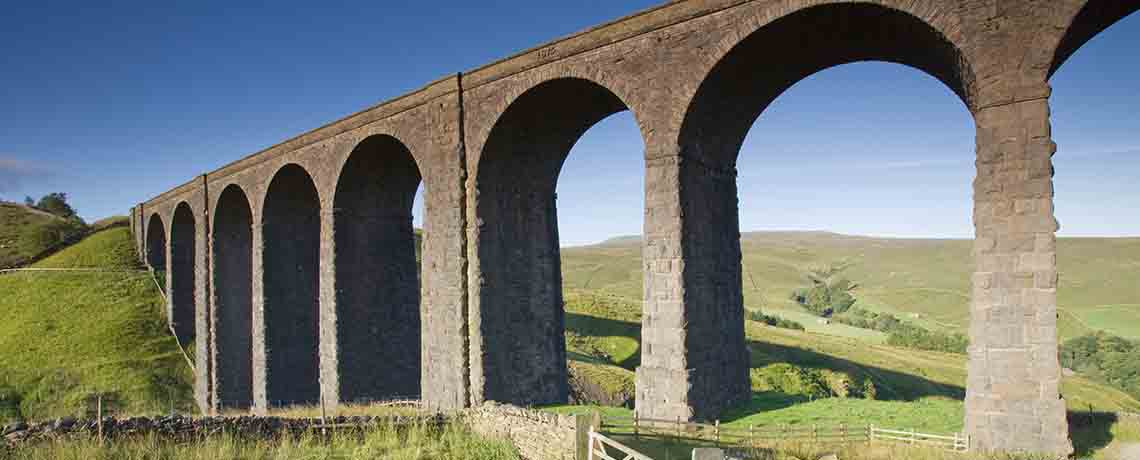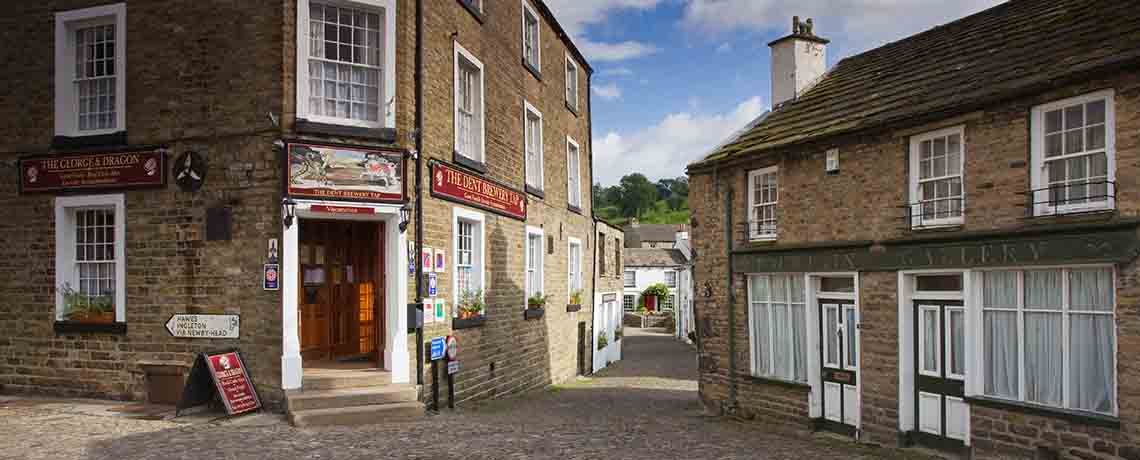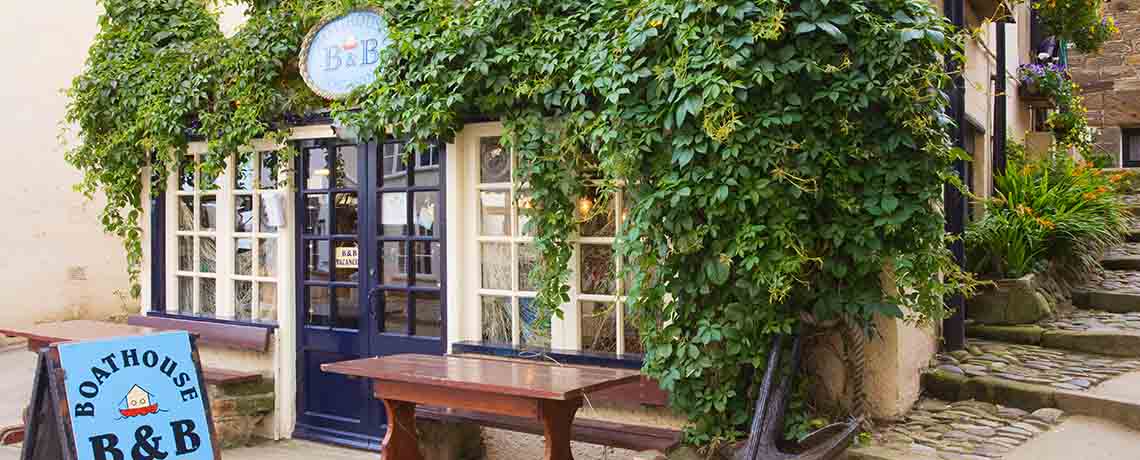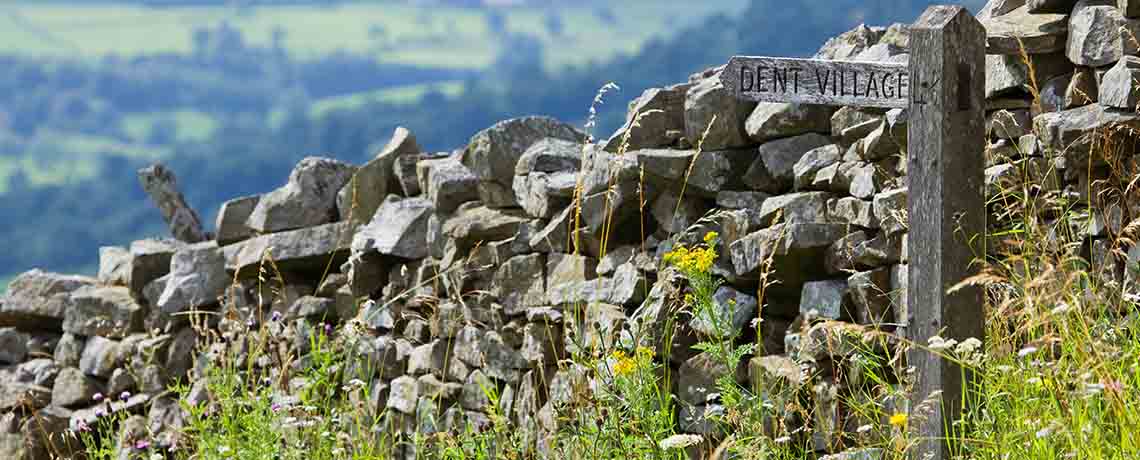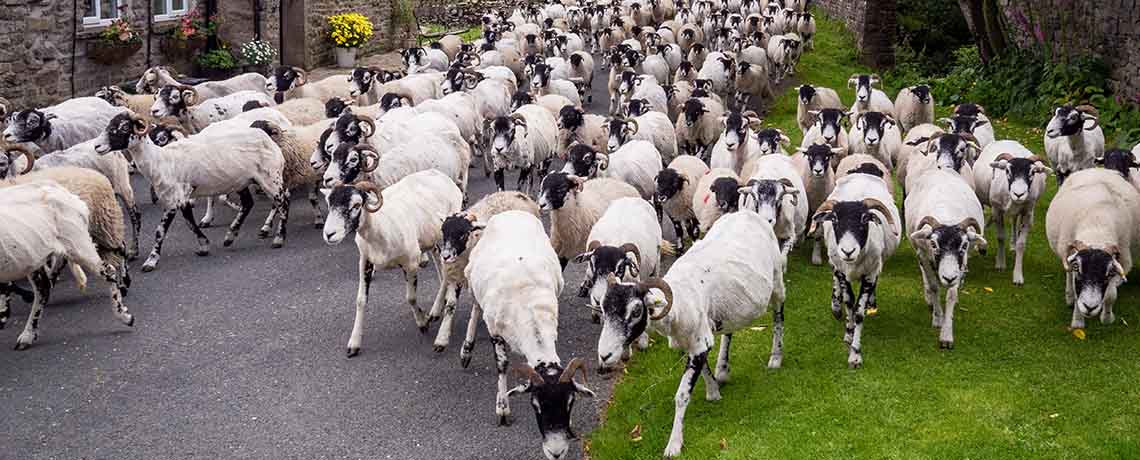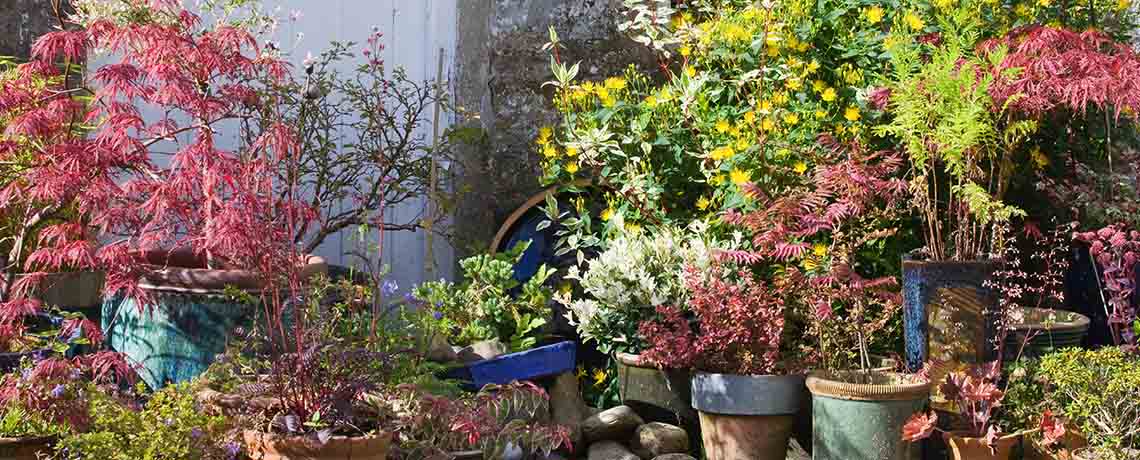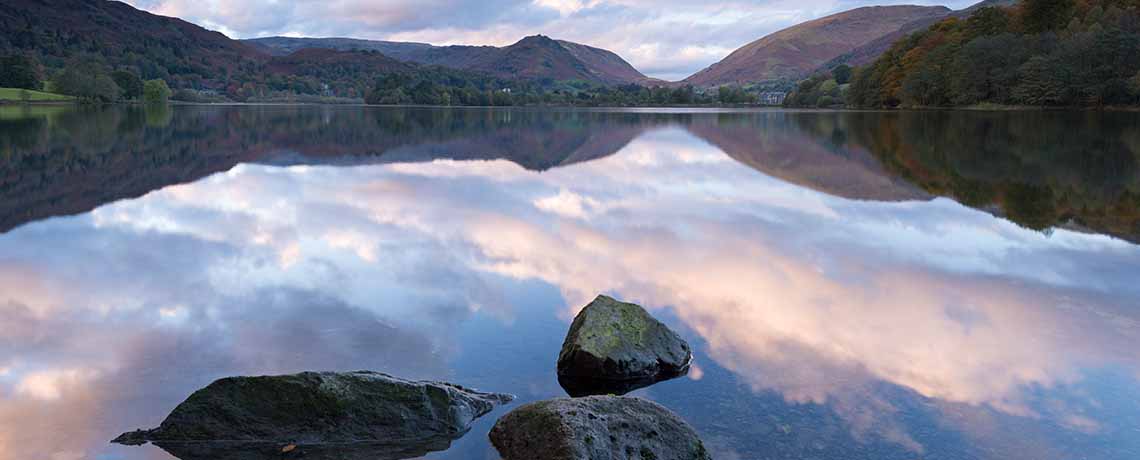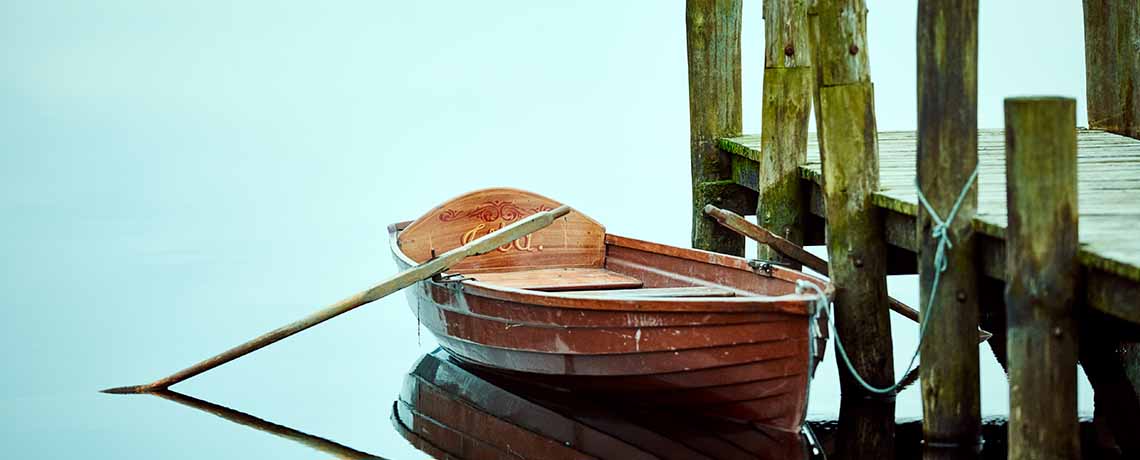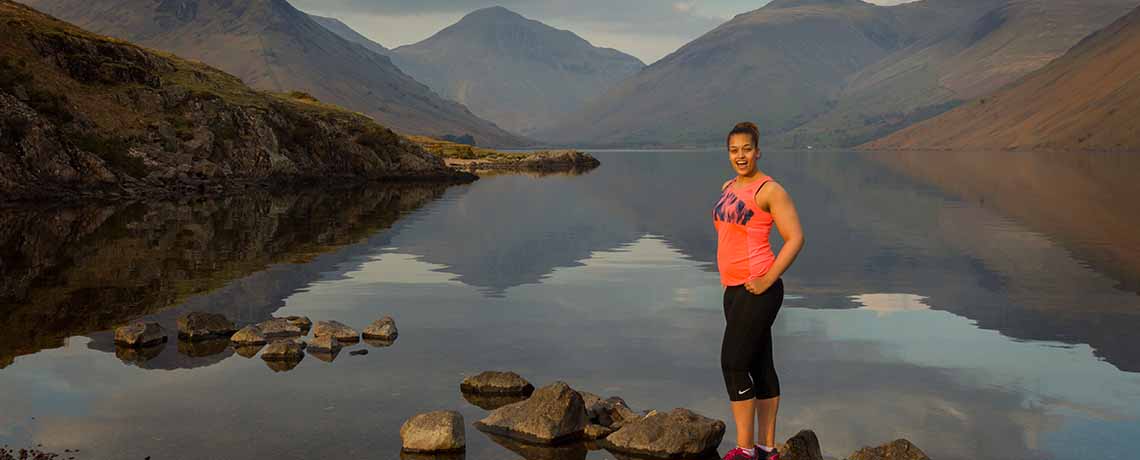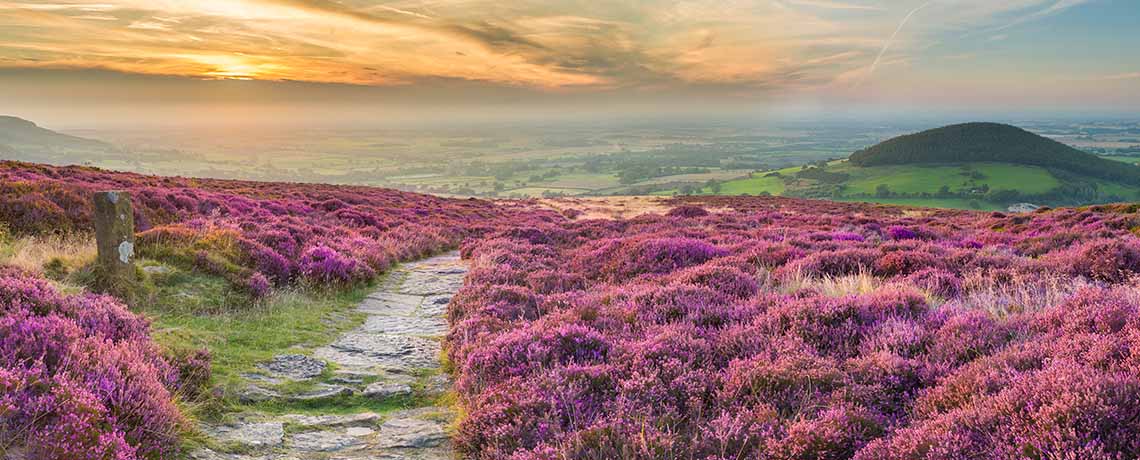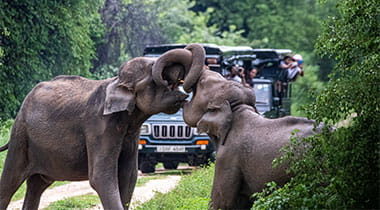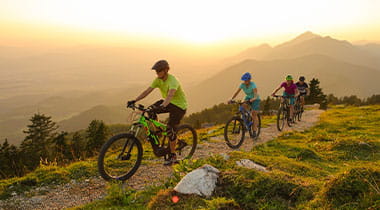A walk in the English countryside can reaffirm your soul.
“You’re walkers, aren’t you?” asked the woman from beneath a sunbonnet fussing over her flowers and vegetable garden. It was all I could do to nod the affirmative while catching my breath; my wife, Tami, and I had just completed a sweaty uphill trudge with loaded backpacks. “Oh, brilliant, and you’re Yanks, I see,” she deduced. “Well, I must say you’ve picked a lovely day. I certainly hope you enjoy walking England. Have you been here before? June is a wonderful month for flowers, birds, and such. Would you like some tea?”
In England, not to partake of afternoon tea is a sin for which there is no redemption. Over relaxed chitchat, we learned she is Alyson Smith—and spotting walkers, English parlance for long-distance hikers—comes with her territory. The walker’s path we were on runs right through her cottage’s front yard, an impossibly pretty seaside parcel on a hilltop swarming with birds overlooking the cerulean Irish Sea to the west.
It was a moment I wanted to stash in a bottle and take home—if I only could.
Walking, birds, flowers, tidy gardens, and tea. Civilized pleasantries with strangers. Storybook landscapes and tales of ancient Druids. It’s all so British. And it somehow resonates with my DNA. With half the blood in my veins owing to this island, I was intrigued with England’s places and faces.
Our impromptu meeting with Alyson was the first of many purely British encounters in the far northern English countryside as Tami and I traversed England on its celebrated walking route: the Coast to Coast Path (C2C). The 220-mile footpath crosses England at the island’s narrowest midsection, linking hamlets and villages roughly a day’s walk apart while crossing three national parks. Small villages, farms, bed-and-breakfasts, crumbling castles, and sheep—lots and lots of sheep—are woven into the indelibly English landscape.
During our three-week, inn-to-inn walk eastward, we enjoyed fresh beds, warm meals, cold pints, and prim British hospitality that melted our hearts. And the English countryside—its leas, tongues, fells, vales, and other features with English idioms—felt like an embroidered quilt that somehow comforted us. Picture a patchwork of dry stone walls crisscrossing grassy pastures, flocks of sheep, stone bridges arching over brooks that actually babble, and enchanting whitewashed stone cottages topped with mossy slate roofs with smoke curling from chimneys. If the C2C were a book, every mile would be a new page that you would want to reread again and again.
Beyond our boot-to-trail ambitions of logging up to 16 miles per day, we pocketed a handful of cherished memories that reaffirmed our common humanity. Each day, Tami and I would encounter other walkers who smiled and issued a hearty “A-llo.” Like many other walkers, we’d celebrate the day’s end with rib-sticking Cumbrian sausages and hard cider with locals who’d raise a toast to the two Americans walking across their country—an undertaking that derails banter about dubious world politics in favor of shared aspirations.
At our final destination at Robin Hood’s Bay, a pub patron asked us the prevailing question: “Why?”
I presented my best case: our goal was to cross England and, hopefully, enrich our souls.
“Well then, you’ve walked across our nation,” he declared. “Not many do that. You’ve probably seen more of the country than most Brits. You’re one of us now.”
In the process of our walk, I had developed an emotional bond to England that I hadn’t anticipated. The countryside seemed to spill out of the pages of Canterbury Tales, its history enthralling. But what I remember most is the people I met along the way, the friendly souls I’ll likely never see again but will remember the rest of my life. And for that, I’ll always remain in England’s debt.









